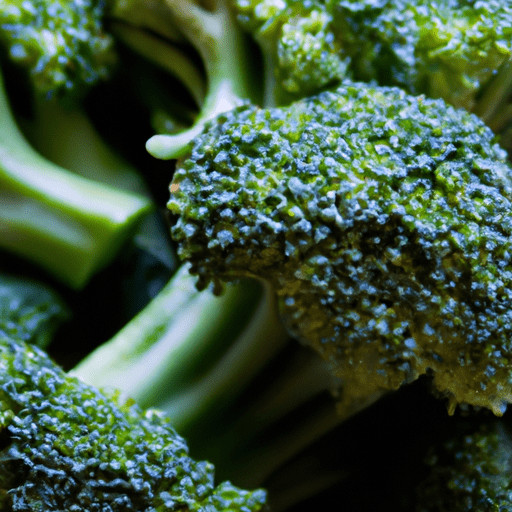The Versatile and Nutritious Broccoli Florets
When it comes to vegetables that are packed with nutrients and lend themselves well to various cooking methods, broccoli florets definitely take a front-row seat. While broccoli in its entirety is known for its health benefits, this article will focus specifically on the florets – those delicious, miniature tree-like portions that have the power to add both flavor and nutrition to a wide array of dishes.
Taste and Texture
Broccoli florets are tender, with a mild, slightly earthy flavor. The texture is crisp, especially when cooked al dente, and it offers a satisfying bite. The flavor profile of broccoli florets complements a variety of other ingredients, making them a versatile addition to many recipes.
Common Uses in Cooking
Broccoli florets are incredibly versatile and can be used in a multitude of dishes. Here are some popular ways to incorporate these green gems into your cooking:
1. Stir-Fries and Sautéed Dishes
Broccoli florets are perfect for stir-fries and sautés, as they retain their crunch even after cooking. Pair them with your favorite protein, such as chicken or tofu, along with a medley of colorful vegetables. Add some garlic, ginger, and soy sauce for a delicious Asian-inspired stir-fry that will satisfy your taste buds.
2. Roasted and Grilled
Roasting or grilling broccoli florets brings out their natural sweetness and adds a delightful caramelized flavor. Toss the florets in olive oil, sprinkle with salt and pepper, and roast in the oven until they turn golden brown and crispy. Alternatively, char them on the grill for a smoky twist on this vibrant veggie.
3. Soups and Salads
Broccoli florets lend themselves well to soups and salads. Whether you’re blending them into a creamy soup or adding them as a raw ingredient in a refreshing salad, they provide a burst of color and nutrients. Consider adding some grated cheese or toasted nuts to elevate the flavors and textures.
4. Steamed or Blanched
For those seeking a simple and healthy option, steaming or blanching broccoli florets is a fantastic choice. This cooking method allows the vegetable to retain its vibrant green color while still offering a delicate texture and subtly sweet taste. Serve them as a side dish or incorporate them into pasta dishes and grain bowls.
Nutritional Value
In addition to their delicious taste, broccoli florets boast an impressive nutritional profile. They are low in calories but high in fiber, making them a great choice for those looking to maintain a healthy weight. These bite-sized florets are also packed with essential vitamins and minerals, including vitamin C, vitamin K, and folate. Broccoli florets are also rich in antioxidants, which help protect the body against harmful free radicals and support overall well-being.
Interesting Facts and History
Did you know that broccoli belongs to the cabbage family, along with cauliflower and kale? It originated in Italy, and its name is derived from the Italian word “brocco,” meaning “cabbage sprout.” Broccoli cultivation dates back over 2,000 years, with records of it being consumed by the ancient Romans. However, it wasn’t until the early 20th century that broccoli gained popularity in the United States, thanks to Italian immigrants who brought their cherished vegetable with them.
Conclusion
Broccoli florets are a culinary powerhouse, offering both taste and nutrition. Whether you choose to stir-fry, roast, steam, or blanch them, these miniature green trees are sure to delight your taste buds and enhance your meals. So next time you’re looking to add a nutritious and versatile vegetable to your plate, don’t forget to reach for the broccoli florets – they’re nature’s gift to your cooking adventures!
Here are some interesting facts about broccoli florets:
Origin: Broccoli, including its florets, is believed to have originated in the Mediterranean region, specifically around Italy. It belongs to the Brassica oleracea family, which also includes cauliflower, cabbage, and Brussels sprouts.
Common Uses: Broccoli florets are commonly used in a variety of culinary dishes. They can be cooked by boiling, steaming, or stir-frying, and are often included in salads, soups, stir-fries, pasta dishes, and casseroles. They can also be eaten raw as a crunchy and nutritious snack.
Nutritional Benefits: Broccoli florets are highly nutritious and packed with essential vitamins, minerals, and dietary fiber. They are a particularly good source of vitamin C, vitamin K, folate, and potassium. They also contain antioxidants like beta-carotene and other phytonutrients, which are beneficial for overall health.
Unique Properties: One unique property of broccoli florets is their floret structure, which consists of multiple small flower buds attached to a thick edible stalk. This distinctive shape and texture contribute to their versatility in various culinary preparations.
Historical Significance: Broccoli has a long history and has been cultivated for centuries. While the exact origins are uncertain, its cultivation can be traced back to ancient Roman times, where it was valued for its taste and medicinal properties. Over time, broccoli has become increasingly popular worldwide due to its nutritional benefits and versatility in cooking.
Remember to always wash broccoli florets thoroughly before use to remove any dirt or potential contaminants.




Use the share button below if you liked it.
It makes me smile, when I see it.